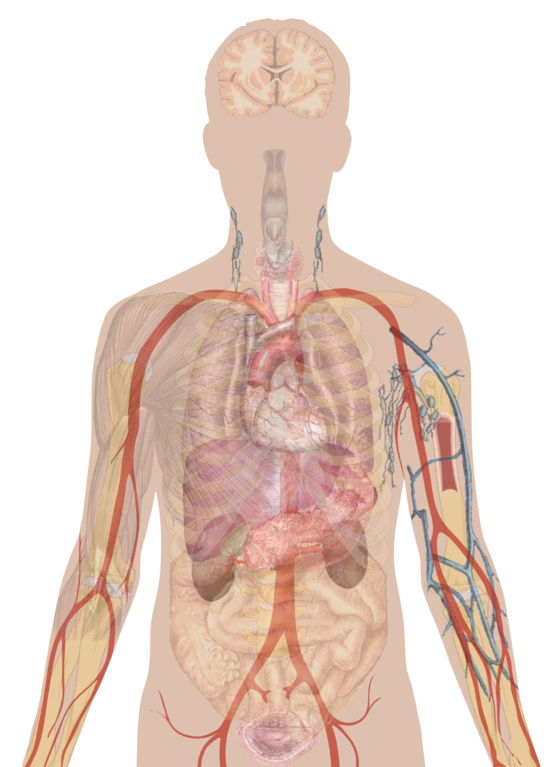Sepsis: What you need to know
- Neil Sardesai

- Nov 9, 2019
- 5 min read
Updated: Nov 8, 2020
Hello everyone and welcome to this week's blog post. Today, I will be discussing sepsis, a life-threatening condition that kills an estimated 52,000 people in the UK each year. First, I will explain what sepsis is and how it is caused, before moving on to explain how it attacks the body. I will then move on to explore how it can be recognised and its treatment.
Sepsis, also known as septicaemia and blood poisoning, is a very dangerous, life-threatening illness which occurs as a very serious complication of an infection. Usually, when the body fights an infection, it releases chemicals into the bloodstream. However, if these chemicals are out of balance, it can result in changes leading to multiple organ failure and death.
Sepsis is a symptom of an infection that is already present in your body. While these infections can be caused by fungi and viruses, they are most often bacteria. Cases of sepsis can originate in several places, including the respiratory system, the abdomen and the urinary tract. After pathogens enter a human, your body sends a flood of chemicals to destroy the pathogens. Even though this defence mechanism is incredibly effective, with most infections being destroyed before any symptoms manifest, in some cases, these chemicals can cause widespread inflammation in the body. This often results in the blood clotting, reducing the flow of blood and therefore oxygen to organs. As such, the organs are severely damaged.
The key to the treatment of sepsis is early intervention, and so, it is incredibly important that the symptoms of sepsis are widely known by doctors and the general public alike. This way, if someone is suspected of having sepsis, they can be taken to a hospital as quickly as possible and treated. Regarding this, the Scottish government in 2019 have begun educating regular people about sepsis, in order to decrease mortality rates from the condition.
The main early symptoms of sepsis include having a fever, feeling faint, a very low or high body temperature, feeling confused, a rapid heart rate and oedema (accumulation of fluid underneath the skin). Once sepsis progresses and becomes established, symptoms include low blood pressure and blood clotting. In its most severe stage, sepsis can also result in 'septic shock'. This is when the body's circulatory system begins failing due to large amounts of clotting, resulting in multiple organ failure, major swelling of limbs and death.

One of the main problems with spotting sepsis is that its symptoms occur concurrently with the symptoms of the person's underlying infection. According to the NHS, this can make sepsis more difficult to identify. Nevertheless, sepsis is usually spotted quickly in a hospital setting, with 72.7% of treated patients surviving to hospital discharge.
The demographic that sepsis targets also helps mask its symptoms, thus making sepsis harder to be discovered. This is due to the fact that sepsis is most common among babies and young children, elderly people and those with a long-term illness such as cancer (since they all have weakened immune systems). As this demographic often have difficulties communicated with others (due to their young age or associated illnesses such as dementia) it can be incredibly difficult to identify the condition quickly enough to be treated effectively.

Even if patients make a recovery from sepsis, many still experience physical, mental and cognitive impairments after recuperation. Indeed, out of the 1.3 million people in the United States who survived to be discharged from hospital, 16% experienced a disability due to the condition. Further, a study published in the Journal of the American Medical Association outlined how sepsis can lead to an increase in the onset of dementia, with estimations that sepsis could cause up to 20,000 new cases of dementia in the United States each year. Nonetheless, these impairments mostly occurred after recovery from severe sepsis, further underlining how important early recognition of the condition is.
According to NHS guidelines, patients should be given antibiotics within an hour of arriving at the hospital. If the sepsis is in an early enough stage, then these antibiotics alone can be enough to treat the disease. In more severe cases, patients are put onto a ventilator (a machine which helps you breathe, thus reducing the strain on the respiratory system and increasing oxygen supply to the body's organs.) Surgery can also be carried out to remove areas of infection, thus limited its spread.
In some rare cases, however, sepsis is not discovered by doctors until it is too late. One of the most well-known cases of this was Jack Adcock, who died in 2011 from sepsis after a series of failings by medical staff. During the trial, much of the blame was placed on Dr Bawa-Garba due to her failure to spot the key symptoms of sepsis (diarrhoea, vomiting, lethargy, blue limbs etc) which Jack was exhibiting. The inquest into Jack's death also highlighted the role that an agency nurse played in Jack's death since she had failed to record the amount of fluid he was losing regularly. In addition, I would contend that poor funding of the NHS also played a part in Jack's death. This is primarily because there were system failures on the computer system at the hospital, meaning that test results couldn't be retrieved, and that staff shortages led to trainee doctors being assigned shifts without adequate supervision.
While the majority of patients make a full recovery from sepsis, some people experience long-term effects. These effects of post-sepsis syndrome include feeling tired, a lack of appetite, nightmares and PTSD, in addition to the symptoms I already listed above.
A study was recently carried out by Harvard University and other universities made headlines, with the Times newspaper stating that common drugs could "stop sepsis". In this study, researchers tested the blood samples of 197 adults and 95 children who'd had sepsis, in order to explore the difference in how sepsis is fought by the adult and child immune systems. After finding drugs that acted on the same pathways that the survivors of sepsis did, they then tested these drugs on mine. As a result of this research, they believe that that they have identified 10 drug therapies that could potentially increase sepsis' survival rate. However, this research remains at an early stage and the drugs have only been tested on mice.
In conclusion, while the research above is promising, the most important factor in reducing sepsis' mortality rate is increasing public awareness as, if the symptoms of sepsis are discovered early enough then the chances of recovery are very high. As such, I would suggest that you should share this article with as many people as possible, as well as encourage your friends to educate themselves in the condition.
Sources:



Comments